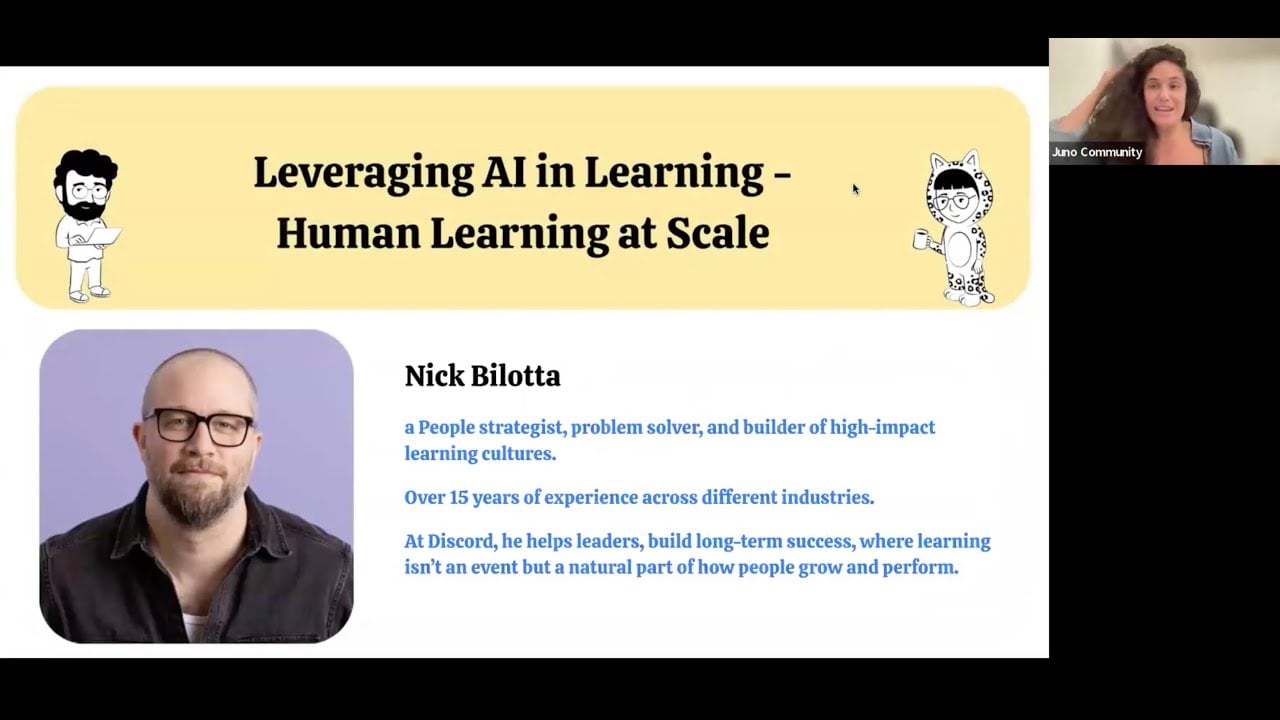
ICYMI: Challenge Accepted #1 - Our First Community Deep-Dive into AI for L&D
When we created Challenge Accepted, the goal was to design a space where L&D, talent development, and enablement leaders could surface real challenges, exchange ideas, and leave with practical next steps.
For our first session, we chose a question that is both urgent and complex:
How do we make AI work for us in learning and development without losing the human element that makes our work meaningful?
Setting the Tone with Nick Bilotta
To open the series, I invited Nick, Learning Experience Manager at Discord.
Nick has spent more than a decade shaping learning cultures in both tech and healthcare. What sets him apart is his approach. He listens first, works alongside you to solve problems, and translates complex ideas into language that resonates.
Nick describes himself as a people strategist and an enthusiastic power user of AI tools like ChatGPT and Claude. That combination made him the perfect guide for a conversation about using AI in a way that amplifies, rather than replaces, human expertise.
Reframing AI in Practical Terms
Nick offered a framing that immediately shifted the conversation. Think of AI as a spreadsheet for words. A spreadsheet is not a mathematician. It applies rules to data at scale. AI does the same with language. Its value depends on the quality and relevance of the data you provide.
With that perspective, the focus moved away from hype or fear and toward practical application. Attendees shared examples where AI had already made an impact:
- Synthesizing large volumes of unstructured notes into a clear summary
- Turning a blank page into a starting point for new content
- Supporting repetitive, structured tasks where efficiency matters
We also identified its limitations. It cannot replicate deep contextual understanding, it requires human oversight, and it will not produce consistently accurate results without guidance.
Moving from Theory to Application
One question sparked significant engagement. How can AI help create learner journeys? Nick’s advice was to feed the system with the business context, learning goals, and audience profiles, then use it to generate initial frameworks, not as a final design, but as a catalyst for creative thinking.
From there, the conversation gained momentum. Sally shared how she had uploaded an existing feedback training into AI so managers could receive examples tailored to their roles. That prompted discussion on using AI to adapt content for different audiences without creating dozens of separate versions.
Other participants described building searchable resource libraries that could answer common employee questions, and using AI to generate coaching prompts aligned with individual performance goals.
The Energy in the Virtual Room
What stood out was the collaborative nature of the discussion. Each contribution built on the last, turning abstract ideas into actionable possibilities. The chat was active with side conversations, quick wins, and practical insights. It felt like a working session rather than a webinar, which was exactly the spirit we hoped to create.
Closing with Curiosity
Nick ended with a reminder that captured the essence of the session:
"Curiosity is at the heart of what we do. AI is simply another way to ask better questions, explore more possibilities, and find stronger answers."
Our first 'Challenge Accepted' confirmed what I had hoped would be true. When you bring the right people into the room, combine practical expertise with shared curiosity, and make space for genuine exchange, the result is more than information.
It is momentum.